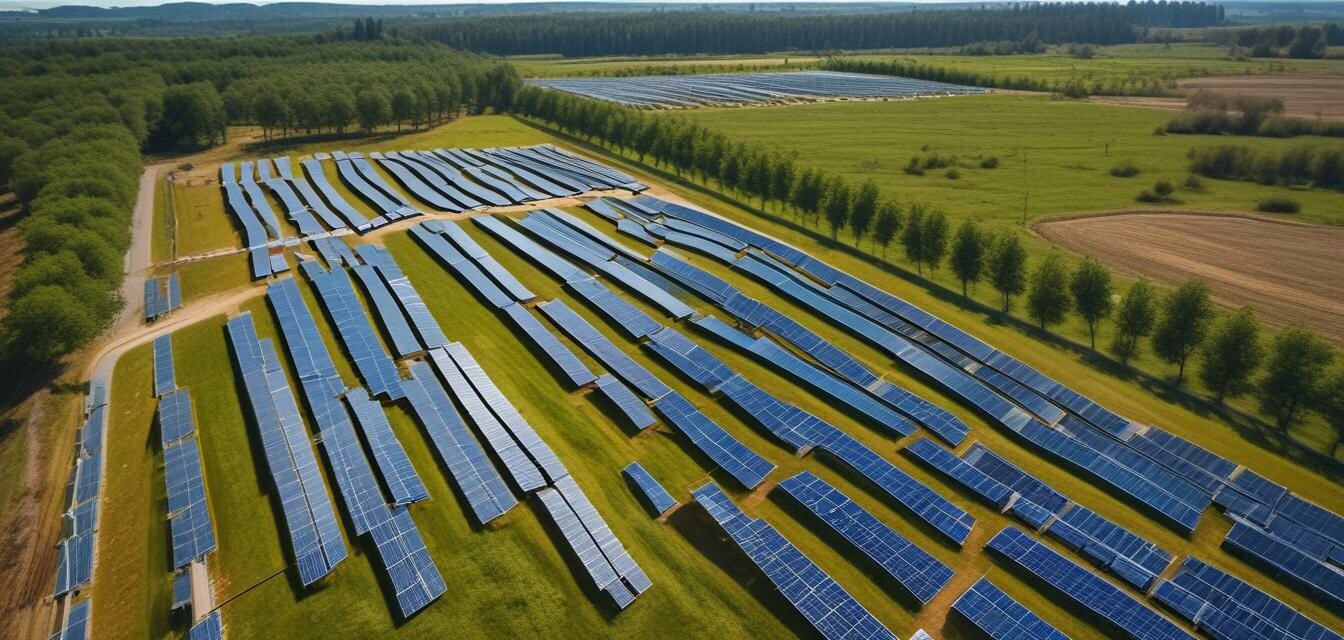
The Growing Trend of Community Solar Farms in 2025
Key Takeaways
- Community solar farms are becoming increasingly popular in 2025.
- These projects promote energy independence and sustainability.
- They offer a solution to homeowners who cannot install solar panels on their properties.
- Government support is driving the growth of community solar initiatives.
- Communities benefit from reduced electricity costs and increased energy security.
As we venture into 2025, the concept of community solar farms is gaining significant traction across the globe. These solar energy projects, which allow multiple households to share the benefits of a single solar installation, are reshaping how local communities approach energy sustainability and independence. This article delves into the growing trend of community solar farms, emphasizing their implications for the future of renewable energy in local communities.
What is a community solar farm?
Community solar farms are solar energy installations shared by multiple participants. They offer a solution for those who wish to benefit from solar energy without having to install panels on their own properties.
How it works
- Residents subscribe to the community solar project, often through a monthly fee.
- The energy produced is credited directly to their electricity bills, providing immediate savings.
- Community projects can range from small initiatives to large-scale solar farms.
Why is the trend growing?
The rise in community solar farms can be attributed to several factors:
| Factor | Explanation |
|---|---|
| Increased awareness of renewable energy | More people are recognizing the importance of sustainable energy sources. |
| Government incentives | Policies encouraging solar adoption have increased funding for community projects. |
| Accessibility | These farms provide affordable solar access for renters and those without suitable roof space. |
| Economic benefits | Lower electricity bills and potential job creation in local markets. |
Community benefits
The implications of community solar farms extend far beyond just energy savings. Here are some significant community benefits:
- Cost Savings: Participants often experience reduced energy costs.
- Energy Security: More local energy sources reduce dependence on traditional grids.
- Environmental Impact: Community solar contributes to lower carbon emissions.
- Community Engagement: Involvement in renewable energy fosters community spirit.
Pros
- Democratizes access to solar power.
- Supports local economies through job creation.
- Strengthens community ties with a shared goal.
- Simplifies the process of adopting solar energy.
Cons
- Potentially higher initial investment for larger projects.
- Regulatory hurdles can slow project development.
- Benefits may vary based on participants' energy needs.
Technological advancements
The evolution of solar technology is contributing to the growth of community solar farms:
- Improvements in solar panel efficiency are making installations more productive.
- Advances in energy storage technologies enhance the viability of off-grid solutions.
- Smart grid technologies allow for better management of energy distribution.
Government support and policies
Government initiatives at both local and federal levels are crucial for the growth of community solar. Major policies include:
| Policy | Impact |
|---|---|
| Tax credits for solar projects | Increases financial feasibility for community solar. |
| Net metering laws | Facilitates fair compensation for solar energy producers. |
| Grants for renewable energy initiatives | Provides funding for new community solar projects. |
Future of community solar farms
The future looks bright for community solar farms as society shifts towards renewable energy. Key indicators include:
- Growth in community engagement and participation.
- Increased funding and investment in renewable energy projects.
- A clearer regulatory landscape supporting solar initiatives.
Conclusion
The trend of community solar farms in 2025 signifies a transformative approach to energy, emphasizing sustainability, accessibility, and community resilience. By embracing this innovative model, communities can work together to create a cleaner, more sustainable future for all.
For more information on related topics, explore our articles on solar panels, battery storage, and latest news and trends.



